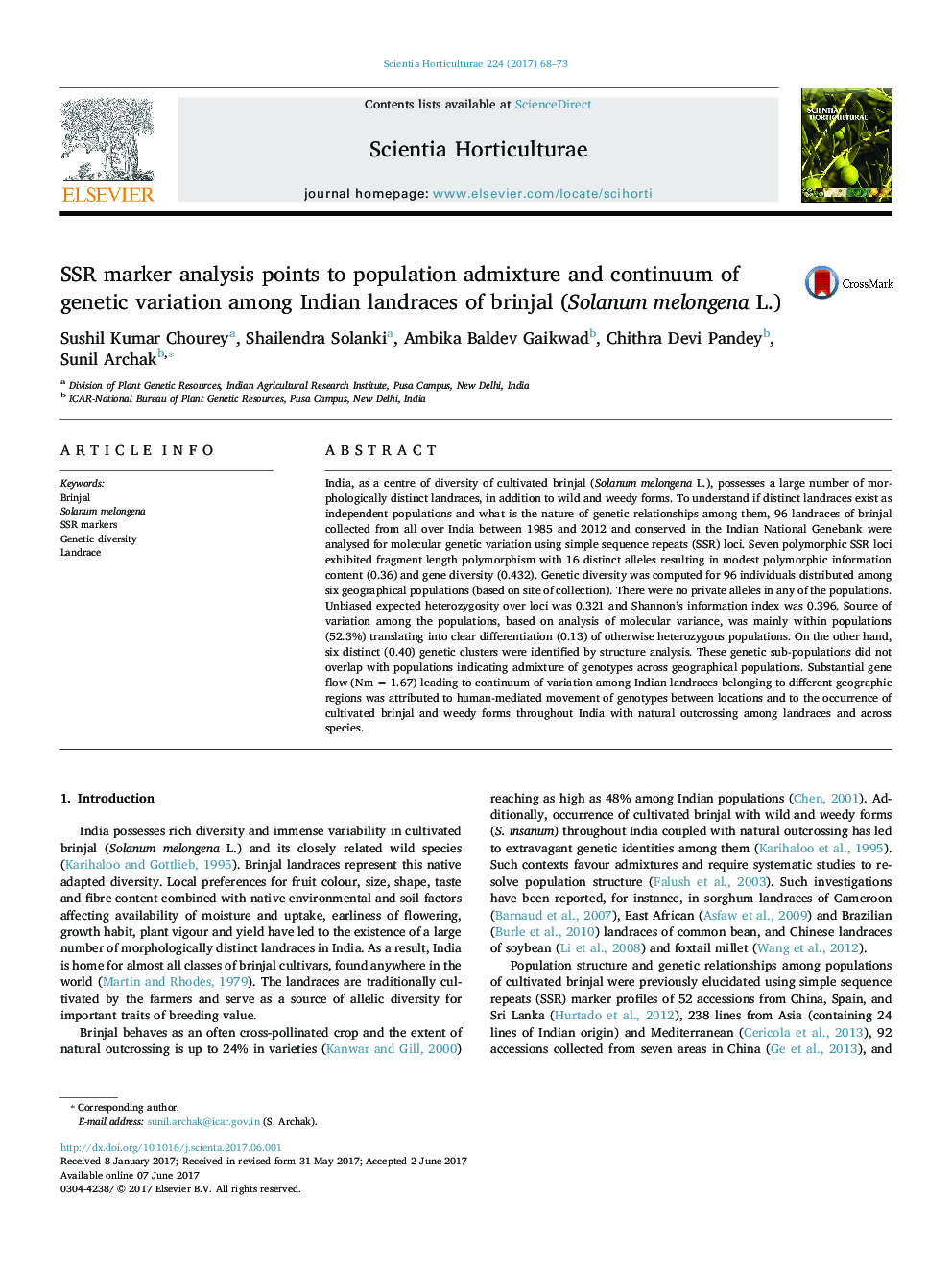| Article ID | Journal | Published Year | Pages | File Type |
|---|---|---|---|---|
| 5769397 | Scientia Horticulturae | 2017 | 6 Pages |
â¢Genetic analysis of 96 Indian brinjal landraces was carried out using SSR markers.â¢11 genetic populations and admixture of genotypes across locations observed.â¢Substantial gene flow and continuum of variation exists among brinjal landraces.
India, as a centre of diversity of cultivated brinjal (Solanum melongena L.), possesses a large number of morphologically distinct landraces, in addition to wild and weedy forms. To understand if distinct landraces exist as independent populations and what is the nature of genetic relationships among them, 96 landraces of brinjal collected from all over India between 1985 and 2012 and conserved in the Indian National Genebank were analysed for molecular genetic variation using simple sequence repeats (SSR) loci. Seven polymorphic SSR loci exhibited fragment length polymorphism with 16 distinct alleles resulting in modest polymorphic information content (0.36) and gene diversity (0.432). Genetic diversity was computed for 96 individuals distributed among six geographical populations (based on site of collection). There were no private alleles in any of the populations. Unbiased expected heterozygosity over loci was 0.321 and Shannon's information index was 0.396. Source of variation among the populations, based on analysis of molecular variance, was mainly within populations (52.3%) translating into clear differentiation (0.13) of otherwise heterozygous populations. On the other hand, six distinct (0.40) genetic clusters were identified by structure analysis. These genetic sub-populations did not overlap with populations indicating admixture of genotypes across geographical populations. Substantial gene flow (Nm = 1.67) leading to continuum of variation among Indian landraces belonging to different geographic regions was attributed to human-mediated movement of genotypes between locations and to the occurrence of cultivated brinjal and weedy forms throughout India with natural outcrossing among landraces and across species.
Graphical abstractDownload high-res image (387KB)Download full-size image
